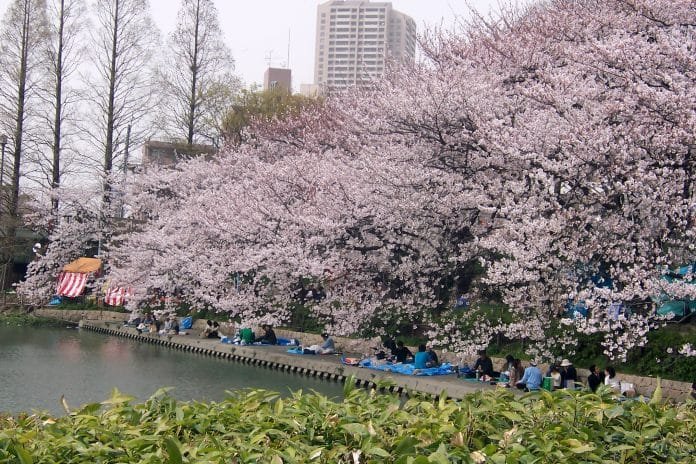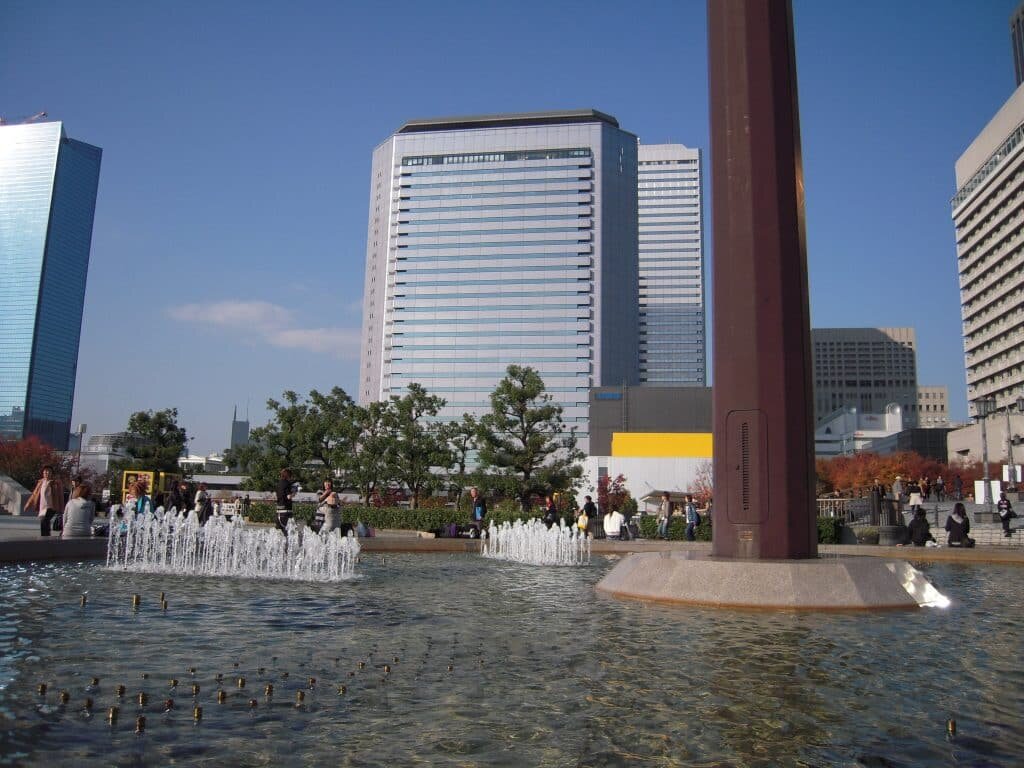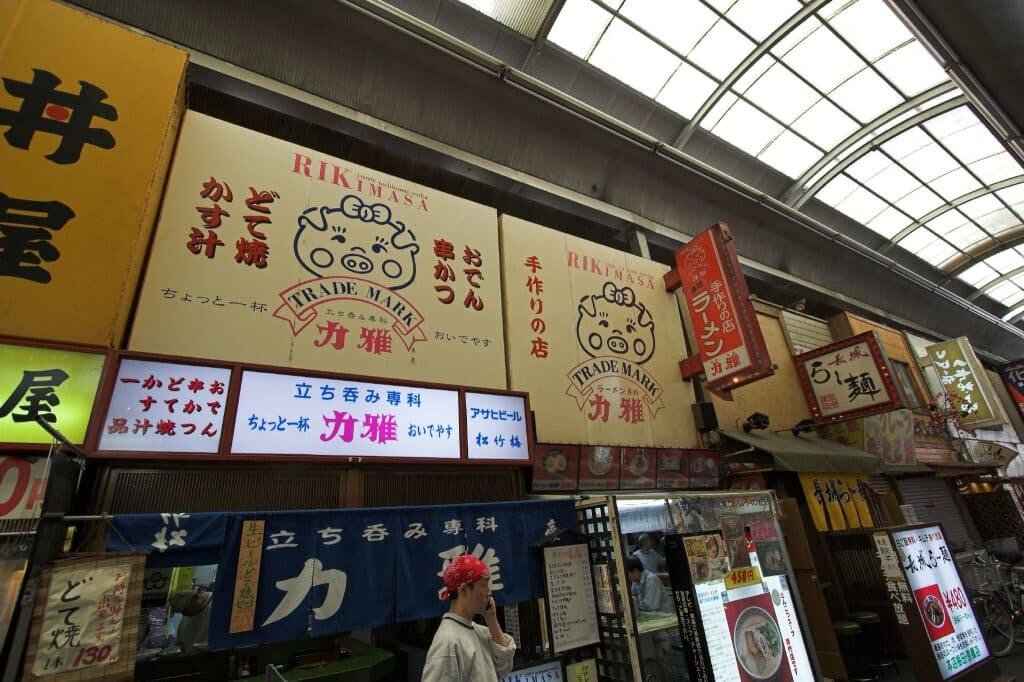
Of all the summary articles I’ve written on the various places to visit in Osaka thus far, I’ll be honest and say that Miyakojima was the one I thought would prove to be the most difficult.
I worked in Miyakojima Ward for a little over a year, and as nice as the people were, there didn’t really seem to be much there.
How wrong I was!
In returning to my old stomping ground for this article, my eyes have been opened and I have learned that there is, in fact, more, a lot more, to this part of town than I first realized.
So, without further delay, let’s head over to Miyakojima Ward.
One of the best times to head to Miyakojima is in April, when the Cherry Blossom (Sakura) trees are in full bloom.
Kema Sakuranomiya Park, which runs along the bank of the Yodogawa River, is one of the most popular gather spots in the city for Hanami parties.
A Hanami party involves friends and work colleagues gathering together, under the cherry blossom trees to enjoy the view, have lots of good food, drink lots of beer and sake, and perhaps, once the drink kicks in, maybe sing a song or two!
Whilst most people tend to flock to Osaka Castle Park in neighboring Chuo Ward, during Hanami season, I honestly think Sakuranomiya is a better option. Not only is it less crowded and has a better, riverside view, it also has a handy supermarket just across the road in case you run out of food and drink and need a refill!
The best time to be in Osaka for Hanami is usually the second and third week of April. However, this changes from year to year so be sure to keep an eye on the weather.
Another of Miyakojima’s highlights is Kyobashi, or more specifically, the area immediately around Kyobashi Station.

Sitting right on the dividing line between Joto Ku to the east and Miyakojima to the west, Kyobashi has grown to become one of Osaka’s major transport hubs, linking the city to Kyoto through the Keihan line, as well as a number of other satellite cities.
Keihan also has a department store in the station that is popular with locals looking for high quality goods. To see the true Kyobashi though, one needs to head to the “shoutengai”, a long street with shops on both sides, to the north of the station.
Along the shoutengai you will find some excellent izakaya restaurants, many with all you can eat and/or drink deals for between 2-3000 yen per person. You’ll also find another unique aspect of Osaka nightlife: standing bars.
Minus seats, patrons of these bars are encouraged to stand alongside each other as they sink their drinks and enjoy some bar snacks. This stimulates conversation among customers and can often lead to the formation of new friendships and even relationships.
A friend of mine actually met her future husband at such a place.
Of course, if you’re not really into drinking or nightlife, Kyobashi has more sedate pursuits to suit you too.

About 12 minutes’ walk, to the immediate west of the station, you will find the Fujita Museum.
Blending the best elements of an art gallery and a historical museum, the Fujita houses one of the largest collections or works and artefacts in all of Kansai. As a result, items are regularly rotated in and out of exhibition, meaning that no two visits to the museum are ever truly the same.
Miyakojima also houses its own local monster legend. As Canada has Ogopogo, Scotland has Nessie, Osaka once had the Nue, and its final resting place is said to be in Miyakojima.
Nuetsuka is a shrine where this legendary creature is said to have been buried back in the 12th century.
According to the story, as depicted in the Heiankyo, an ancient Japanese text, The Nue first appeared in the region around 1150 AD and was said to terrorize people at night. The Nue was said to have the head of an ape, the body of a raccoon, the legs of a tiger and the tail of a serpent. The brave warrior, Yorimasa Genzanmi was said to have killed the creature in 1153, casting its body into the Yodogawa River. However, in time the animal’s body washed up on what is now Sakuranomiya. Fearing a curse, the locals performed a burial ritual and entombed the creature in its eternal resting place, which we know today as the Nuetsuka.
In time, the Nue actually came to be seen as a symbol of good luck for the people of Osaka, with its visage even being incorporated into the logo of Osaka bay.
So, next time you’re in Osaka, whether it’s a cold beer in the park, some good conversation, or the chance to pay homage to Japan’s first mutant, then Miyakojima is the place to be!
























